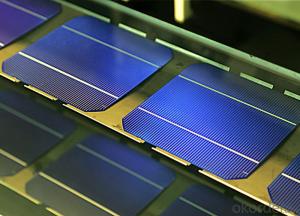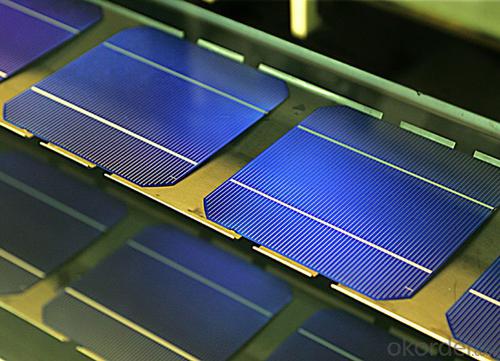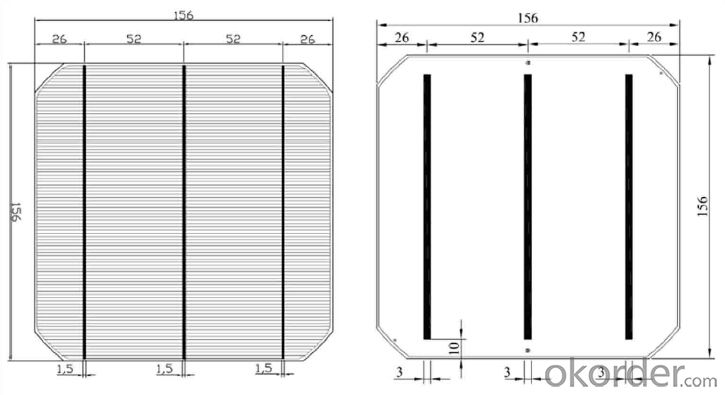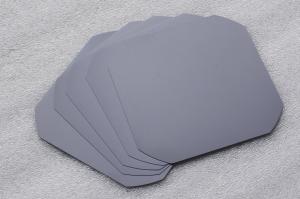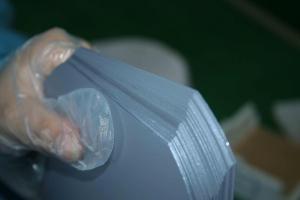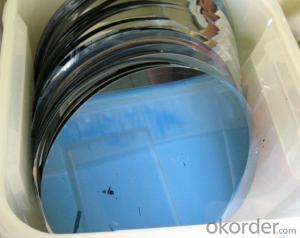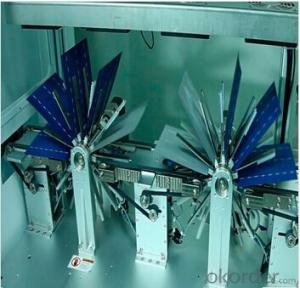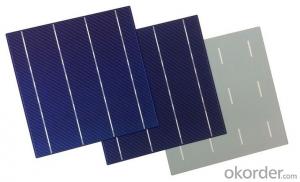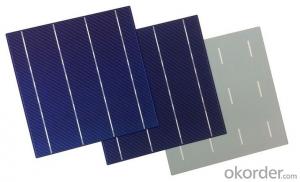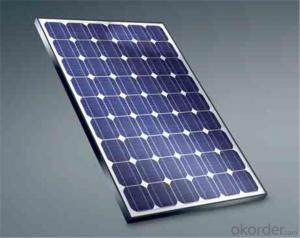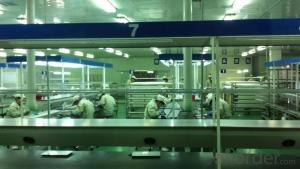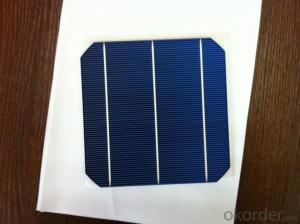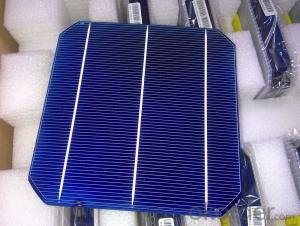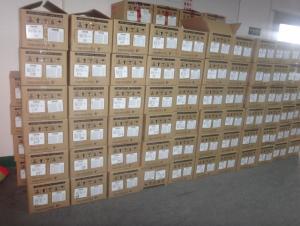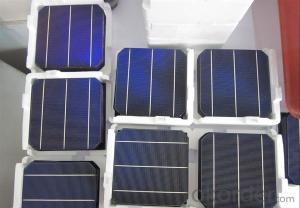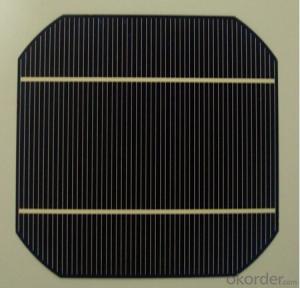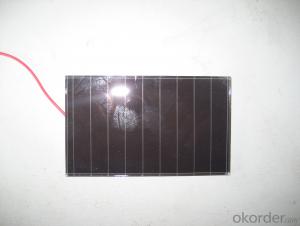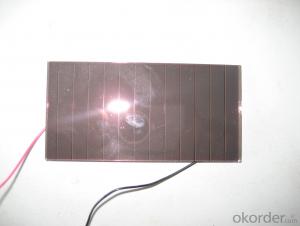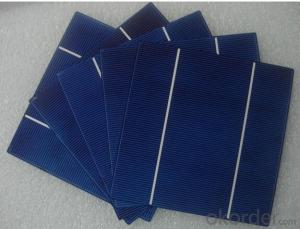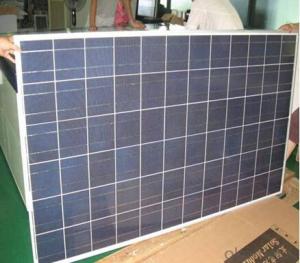Solar Mono Silicon Wafer - Mono Solar Cells 156mm*156mm in Bulk Quantity Low Price Stock 19.2
- Loading Port:
- Shanghai
- Payment Terms:
- TT OR LC
- Min Order Qty:
- 1000 pc
- Supply Capability:
- 100000 pc/month
OKorder Service Pledge
OKorder Financial Service
You Might Also Like
Brief Introduction
- Up to 20.0% efficiency, one of the highest performing mono crystalline cells on the market
- Three bus bars boosts current collection over the entire cell area, leading to higher fill factors
- Blue anti-reflecting coating allows more sunlight be captured and converted to electricity
- Finer, closer fingers improves charge collections for improved energy yield
- Lower light-induced degradation leads to greater power output over the entire module lifetime
- All solar cells are tightly classified to optimize output of module
- Maximum yield and longevity due to hotspot prevention
- Premium appearance results in a highly uniform and aesthetically appealing module
Specification
- Product Mono-crystalline silicon solar cell
- Dimension 156 mm x 156 mm ± 0.5 mm
- Thickness 200 μm ± 30 μm
- Front 1.5 ± 0.1 mm busbar (silver)
- Silicon nitride antireflection coating
- Back 3.0 mm continuous soldering pads (silver)
- Back surface field (aluminum)
Electric performance parameters

- Testing conditions: 1000 W/m2, AM 1.5, 25 °C, Tolerance: Efficiency ± 0.2% abs., Pmpp ±1.5% rel.
- Imin : at 0.5 V
Light Intensity Dependence
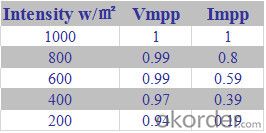
Soldering Ability
- Peel Strength: > 1.0 N/mm (Pull soldered ribbon from busbar in 5 mm/s of 180°)
Dimension Figure
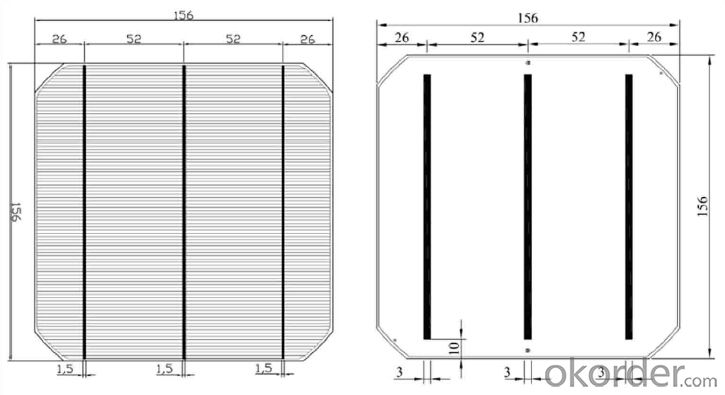
Quick Response
- Any time and anywhere, reply clients' email and solve all problems happen in the work at the first time.
- Remove clients doubts and offer the best solution at the first time.
- Give our clients the lastest news of the photovoltaic, update the newest stock informtion.
Production and Quality Control
- Precision cell efficiency sorting procedures
- Stringent criteria for color uniformity and appearance
- Reverse current and shunt resistance screening
- ISO9001,ISO14001 and OHSAS 18001,TUV Certificated
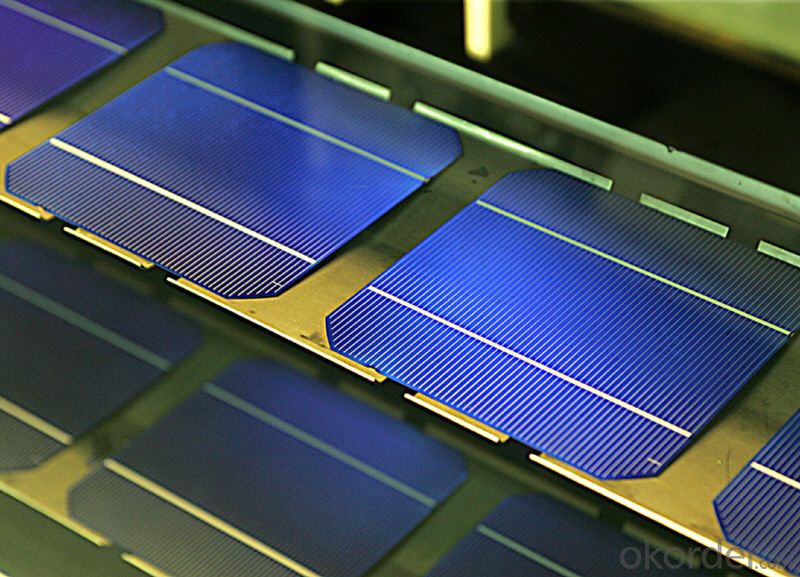
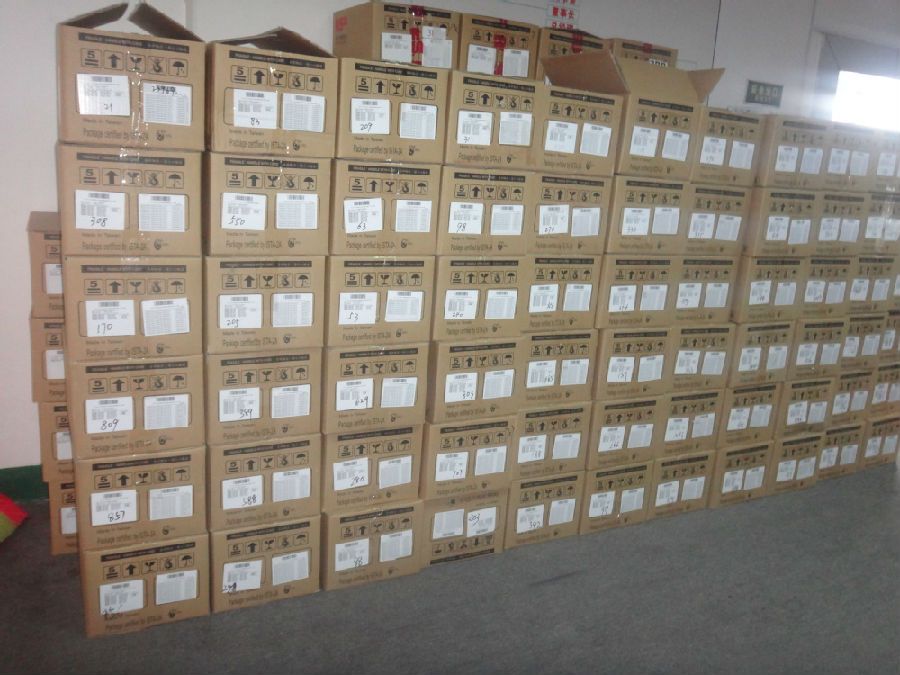
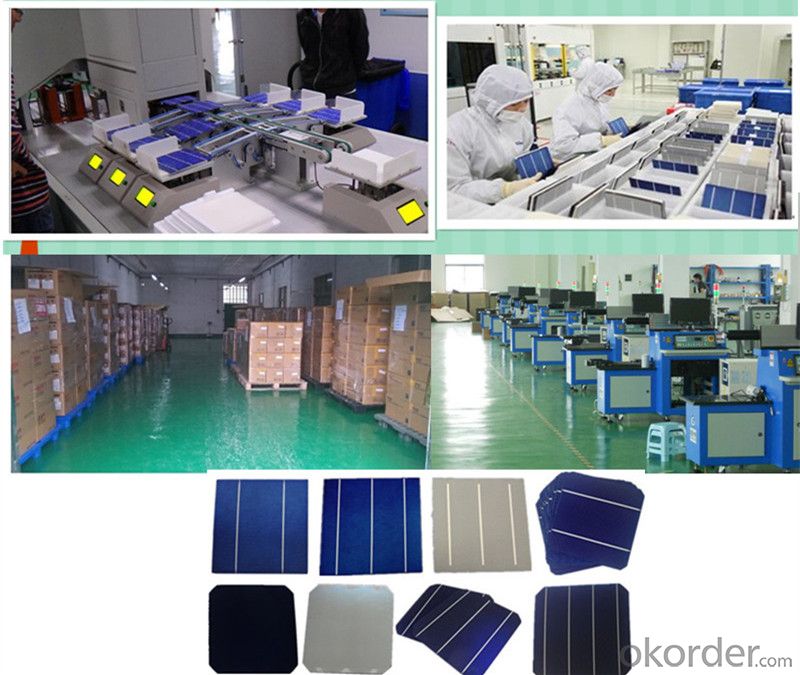
FAQ:
1. Q: Do you have your own factory?
A: Yes, we have. Our factory located in Jiangsu
2. Q: How can I visit your factory?
A: Before you visit,please contact us.We will show you the route or arrange a car to pick you up.
3. Q: Do you provide free sample?
A: Commenly we provide paid sample.
4. Q: Could you print our company LOGO on the nameplate and package?
A: Yes, we accept it.And need an Authorization Letter from you.
5. Q: Do you accept custom design on size?
A: Yes, if the size is reasonable.
6. Q: How can I be your agent in my country?
A: Please leave feedback. It's better for us to talk about details by email.
7. Q: Do you have solar project engineer who can guide me to install system?
A: Yes, we have a professional engineer team. They can teach you how to install a solar system.
- Q: Are solar silicon wafers affected by vibrations?
- Yes, solar silicon wafers can be affected by vibrations. Vibrations, especially high-frequency vibrations, can cause microscopic cracks or damage to the silicon wafers, which can impact their performance and efficiency in converting sunlight into electricity. Therefore, it is important to minimize or control vibrations in the vicinity of solar panels to ensure optimal functioning and longevity of the silicon wafers.
- Q: How are solar silicon wafers handled and transported?
- Solar silicon wafers are typically handled and transported with great care to protect their fragile nature. They are usually packaged in protective cases or trays to prevent damage during handling and transportation. Specialized equipment, such as robotic arms or vacuum grippers, may be used to move and manipulate the wafers without causing any harm. Additionally, they are often transported in climate-controlled environments to prevent exposure to extreme temperatures or humidity, which can affect their performance.
- Q: Can solar silicon wafers be used in concentrated photovoltaic systems?
- Yes, solar silicon wafers can be used in concentrated photovoltaic systems. These systems use lenses or mirrors to concentrate sunlight onto smaller, more efficient solar cells, including silicon wafers. The concentration increases the amount of sunlight reaching the cells, resulting in higher energy output.
- Q: Can solar silicon wafers be used in military or defense applications?
- Yes, solar silicon wafers can be used in military or defense applications. They can be integrated into various military equipment and systems to power sensors, communication devices, and other electronic components. Solar power offers a reliable and sustainable energy source in remote or austere environments, reducing the need for traditional fuel supply lines. Additionally, solar-powered systems can enhance operational capabilities by providing uninterrupted power supply and reducing the risk of detection due to reduced heat and noise emissions.
- Q: How are solar silicon wafers packaged for shipping?
- Solar silicon wafers are typically packaged for shipping by placing them in anti-static foam trays or boxes. These trays or boxes are designed to securely hold and protect the delicate wafers during transportation. The packaging is often customized to provide cushioning and prevent any damage or breakage during transit.
- Q: What is the role of front contacts on solar silicon wafers?
- The role of front contacts on solar silicon wafers is to facilitate the flow of current generated by the sunlight-absorbing material within the wafer. These contacts, typically made of metal, are strategically placed on the front surface of the wafer to create a conductive path for the generated electricity to be collected and transferred to the external circuitry. They help maximize the efficiency of the solar cell by minimizing resistive losses and allowing the harvested energy to be utilized for various applications.
- Q: Can solar silicon wafers be used in solar-powered drones?
- Yes, solar silicon wafers can be used in solar-powered drones. These wafers are commonly used in the production of solar cells and can efficiently convert sunlight into electricity. Solar-powered drones can utilize these wafers to generate the required energy for their operation, allowing them to fly for extended periods without relying on traditional fuel sources.
- Q: Silicon wafer cleaning after the two sides of the upper and lower grille also has a basket of flowers (Bai Yin)
- I used to solve this problem for several months before the DOE experiment to solve, so it is very difficult, and there is no relationship with the bubble, and now the cleaning process does not need to bubble
- Q: Can solar silicon wafers be used in solar-powered gadgets?
- Yes, solar silicon wafers can be used in solar-powered gadgets. These wafers are the key component in solar cells, which capture sunlight and convert it into electricity. By using solar silicon wafers, solar-powered gadgets can harness clean and renewable energy from the sun to power various devices.
- Q: What is the typical thickness tolerance of a solar silicon wafer?
- The typical thickness tolerance of a solar silicon wafer is around ± 20 micrometers.
Send your message to us
Solar Mono Silicon Wafer - Mono Solar Cells 156mm*156mm in Bulk Quantity Low Price Stock 19.2
- Loading Port:
- Shanghai
- Payment Terms:
- TT OR LC
- Min Order Qty:
- 1000 pc
- Supply Capability:
- 100000 pc/month
OKorder Service Pledge
OKorder Financial Service
Similar products
Hot products
Hot Searches
Related keywords
